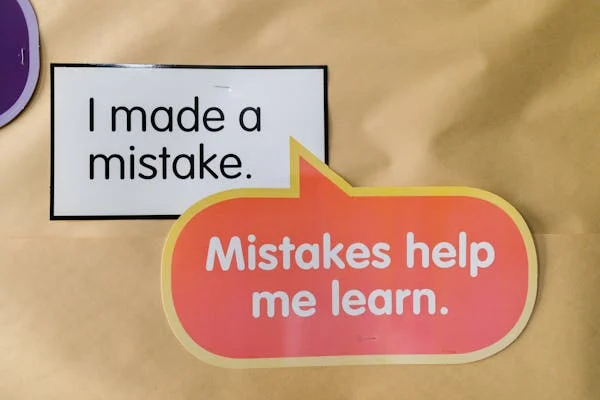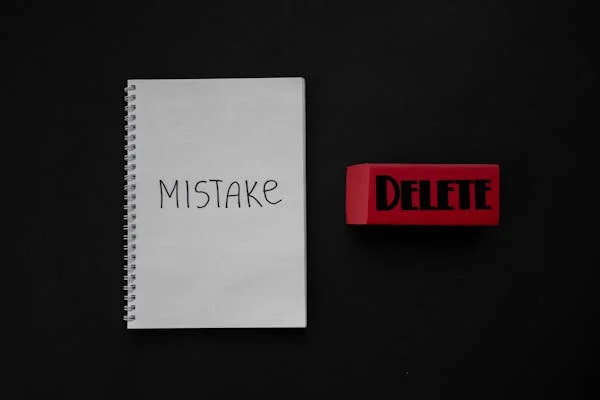In a world dominated by algorithms and admission dashboards, you’d think college applications would be pretty straightforward by now. But honestly, that’s not the case. Every year, thousands of talented students get turned down by their dream schools — not because they’re lacking in skills or potential, but because of avoidable mistakes. The process can feel pretty confusing and high-stakes, yet the most common errors in college apps stay pretty much the same year after year.
Table of Contents
- Introduction: The High-Stakes Game of Admissions
- Mistake #1: Misunderstanding the Application Requirements
- Mistake #2: Writing Generic Personal Statements
- Mistake #3: Ignoring Supplemental Essays
- Mistake #4: Last-Minute Submissions
- Mistake #5: Inadequate Research on Schools
- Mistake #6: Weak Letters of Recommendation
- Mistake #7: Over-Emphasizing Test Scores
- Mistake #8: Undervaluing Extracurriculars
- Mistake #9: Misjudging Financial Aid and Scholarships
- Mistake #10: Failing to Proofread and Edit
- Tips to Craft a Winning Application
- Final Thoughts
1. Introduction: The High-Stakes Game of Admissions
Applying to college in 2025 is tougher than ever. Thanks to AI tools helping with admissions, more international students trying their luck, and a shift towards looking at the whole picture, students are bumping into a lot of unspoken rules they don’t even know about.
With all this pressure, it’s easy to make mistakes—not because students are lazy, but because nobody’s really taught them how to put together a smart, strategic application. Let’s take a look at some common college application blunders and figure out how to steer clear of them.
2. Mistake #1: Misunderstanding the Application Requirements
Each university has unique criteria. Some require subject tests; others don’t. Some have strict GPA cutoffs; others prioritize essays.
| School Type | Typical Requirement | What Students Often Miss |
|---|---|---|
| Ivy League | Essays, interviews, recommendations | Portfolio for certain majors |
| Public Universities | Test scores, GPA, FAFSA | Honors program essays |
| Liberal Arts | Demonstrated interest, recommendations | Campus visit notes, optional essays |
Solution:
Always read the application guidelines directly from the school’s website—not from forums or Reddit threads. Each word matters.
3. Mistake #2: Writing Generic Personal Statements
Admissions officers can detect a template from a mile away. “I want to attend your university because of your world-class faculty” is a sentence they’ve read 300 times this week.
The Fix:
- Tailor every essay to the school.
- Use specific examples: professors, courses, clubs.
- Reflect genuine personal experiences.
Example:
Instead of saying:
“I’ve always wanted to study business.”
Try:
“After running a sneaker reselling business on Instagram, I became fascinated by consumer psychology—especially after reading Dan Ariely’s Predictably Irrational.”

4. Mistake #3: Ignoring Supplemental Essays
If the college took time to ask you something, answer it with care. Many applicants breeze through these with copied material from their personal statement.
Quick Tip:
Treat each supplemental essay like a job interview question. Don’t recycle content unless it’s tightly relevant and reworded.
5. Mistake #4: Last-Minute Submissions
You wouldn’t turn in your final paper at 11:59 PM, right? Yet, each year, students submit applications with less than an hour on the clock.
| Consequences of Rushed Submissions |
|---|
| Missed uploads (transcripts, portfolios) |
| Crashed application portals |
| Typos and errors |
| Missing recommendation letters |
Strategy:
Use a deadline system:
- Internal deadline: 10 days before actual due date
- Review deadline: 7 days before
- Submission day: 3–5 days early
6. Mistake #5: Inadequate Research on Schools
Ranking isn’t everything. Some students blindly apply to “top schools” with little understanding of culture, curriculum, or fit.
Red Flag Phrases in Essays:
- “Your school is ranked highly.”
- “You have great research.”
Better:
- “After attending your HackNY student event and speaking to Professor Delaney, I realized I want to join your AI lab.”
7. Mistake #6: Weak Letters of Recommendation
A glowing letter from someone who barely knows you can be worse than a modest one from a mentor who knows you deeply.
Avoid:
- Asking teachers from freshman year
- Picking someone for their title, not their connection to you
Do:
- Choose those who taught you recently and can speak to your growth
- Provide them with your resume, transcript, and a summary of your goals
8. Mistake #7: Over-Emphasizing Test Scores
Some applicants believe a 1580 SAT will carry their application. In test-optional environments, it doesn’t.
| Admission Factor | Weight |
|---|---|
| Essays | 30% |
| GPA & Transcript | 25% |
| Test Scores | 15% |
| Recommendations | 10% |
| Extracurriculars | 20% |
Insight:
Focus on the full picture. A strong essay can outweigh a moderate SAT score.
9. Mistake #8: Undervaluing Extracurriculars
Admissions officers want more than academic robots. They want leaders, creators, and changemakers.
Don’t:
- List 20 minor clubs
Do:
- Highlight 3–5 activities with impact
- Quantify achievements (e.g., “Raised $12,000 for mental health awareness”)
10. Mistake #9: Misjudging Financial Aid and Scholarships
Many students assume they won’t qualify for aid, or that private schools are unaffordable.
Common Oversights:
- Not submitting FAFSA or CSS Profile on time
- Not applying to merit scholarships (even at Ivy League schools)
| Financial Document | Purpose | Deadline |
|---|---|---|
| FAFSA | Federal Aid | Varies by state |
| CSS Profile | Institutional Aid | Usually earlier than FAFSA |
| School-specific forms | Scholarships, grants | Varies widely |
11. Mistake #10: Failing to Proofread and Edit
It seems obvious. Yet each year, thousands of essays include:
- “I’m excited to attend [ university ].”
- Typos like “defiantly” instead of “definitely”
Technique:
- Print your essay out and read it aloud.
- Use tools like Grammarly, but don’t rely solely on them.
- Ask a mentor or teacher to read it objectively.
12. Tips to Craft a Winning Application
Here’s a quick checklist to ensure your application shines:
| Category | Must-Do |
|---|---|
| Personal Essay | Tell a compelling story, not a resume |
| School Research | Mention unique programs and people |
| Activities List | Focus on depth over breadth |
| Recommendations | Choose people who know your character |
| Timeline | Begin at least 3–6 months early |
13. Final Thoughts
At the end of the day, applying to college isn’t about being perfect. It’s more about being real. The biggest mistakes people make? Rushing through, copying the same stuff from other applications, or putting too much emphasis on where the school’s ranked instead of whether it’s the right fit for you.
From my experience with both the wins and the letdowns in the admissions game, I’ll say this: the best applications aren’t always from the students with the highest grades.
They’re from the ones who are truly intentional, who put thought into what they’re sharing. So, take your time, be mindful, and honestly—just be yourself.
If you’re looking for personalized help with your college application strategy, check out our upcoming guides on writing stellar essays, decoding financial aid packages, and choosing between acceptance letters. Stay tuned.
